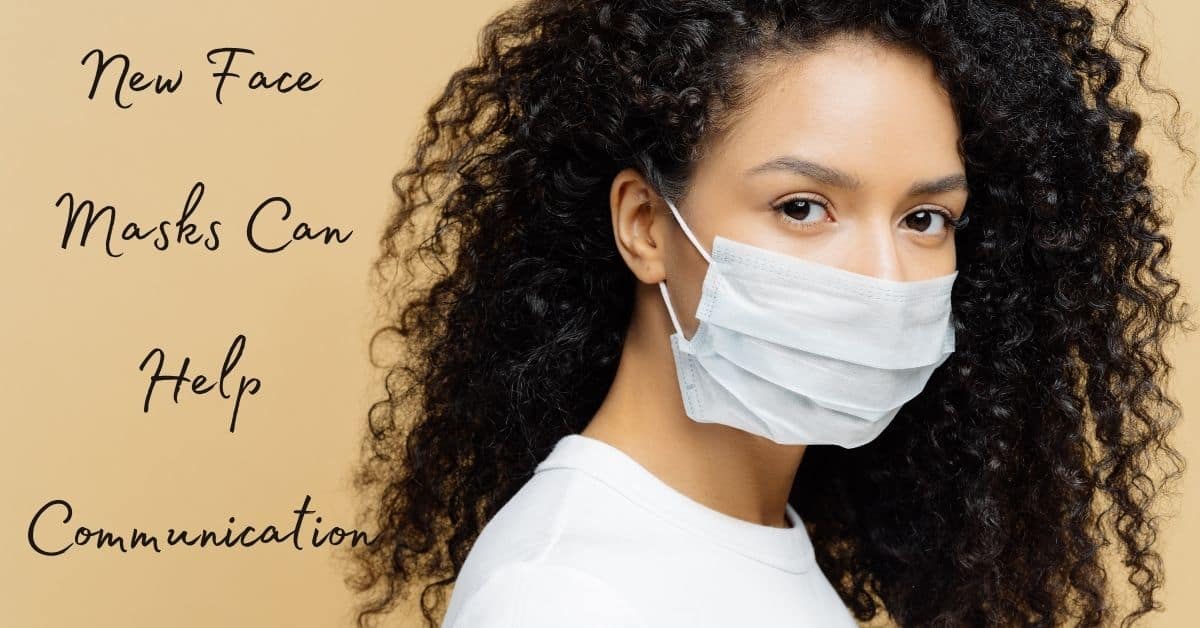
Are you having a hard time communicating while wearing a face mask? Public health officials have asked us all to do our part to stop the spread of COVID-19. One way to do this is by wearing face masks. Face masks can make communication more difficult, but there are ways you can improve communication while wearing a face mask. New face masks can help with communication, and we have a few tips to help you communicate while wearing a mask.
Face Masks Can Make Communication More Difficult
Face masks are an important part of the public health response to stop the spread of COVID-19. They can reduce the person-to-person transmission of this air-borne virus. But face masks can make it harder to follow conversations. Face masks cover the lower half of the face, making it difficult to see facial expressions, pick up on non-verbal cues, or read lips. Masks can muffle sounds, and you will need more mental energy to hear speech and ignore background noise.
For those with hearing loss, masks can make it even harder to follow conversations. You’re used to seeing visual cues to help you hear, and you often lip read to pick up on any words you’ve missed. When wearing a face mask, you might feel less connected, and you’ll probably feel a bit more stressed.
Designing New Face Masks
If you’ve been having a hard time communicating with face masks, there’s a new solution. A new face mask design can make it easier to communicate while wearing a face mask. For people with normal hearing and people with hearing loss, seeing the face will aid in better communication and feelings of connectedness.
That’s why you can get a new face mask that won’t block the lower half of your face. You can find a mask that still stops the spread of COVID-19 without covering your lips and mouth. Look for a mask with a clear panel over the mouth. These masks still have a fabric border and ear loops, but they create a way to see more of the face.
New Masks for Health Care Workers
Researchers are working on developing new masks for health care workers. These masks need to filter out harmful particles, but also show more of the face and mouth. Accessing health care can be extremely stressful, and if you have hearing loss, face masks can make it even harder to hear and understand conversations. Providing new masks to health care professionals will aid in communication for everyone, and make it easier for you to get the care you need.
Tips for Communicating with Face Masks
Whether you have a regular mask or a mask with a clear panel over the mouth, communication can be a bit more difficult. These tips will help you communicate while wearing a face mask and help you overcome communication barriers.
- Get your friend’s attention before you start speaking. They’ll have an easier time understanding you if they’re paying attention from the first word. You can get their attention by calling their name or waving your hand or arm.
- Face your friend when speaking. Even though part of your face is covered, it will still be easier to follow the conversation if you’re facing each other, and making eye contact.
- Talk a little louder than normal, but don’t shout. The mask over your mouth and nose will block some of the sound, so speaking a bit louder than usual will help your friend hear. However, don’t shout. When you yell the sound can get distorted, and it might even be harder to understand than when you speak at a normal volume.
- Ask your friend if they’ve understood. Check in with your friend throughout the conversation to make sure they’ve understood everything you said. Repeat or rephrase anything they didn’t understand, and don’t move on until you’re both on the same page.
- Make the most of body language and hand gestures. You can communicate without words by nodding your head, shrugging your shoulders, and talking with your hands.
If you have hearing loss, communicating with face masks can be a challenge. Visit one of our locations today to find out how hearing aids can help you communicate in a variety of listening situations.
